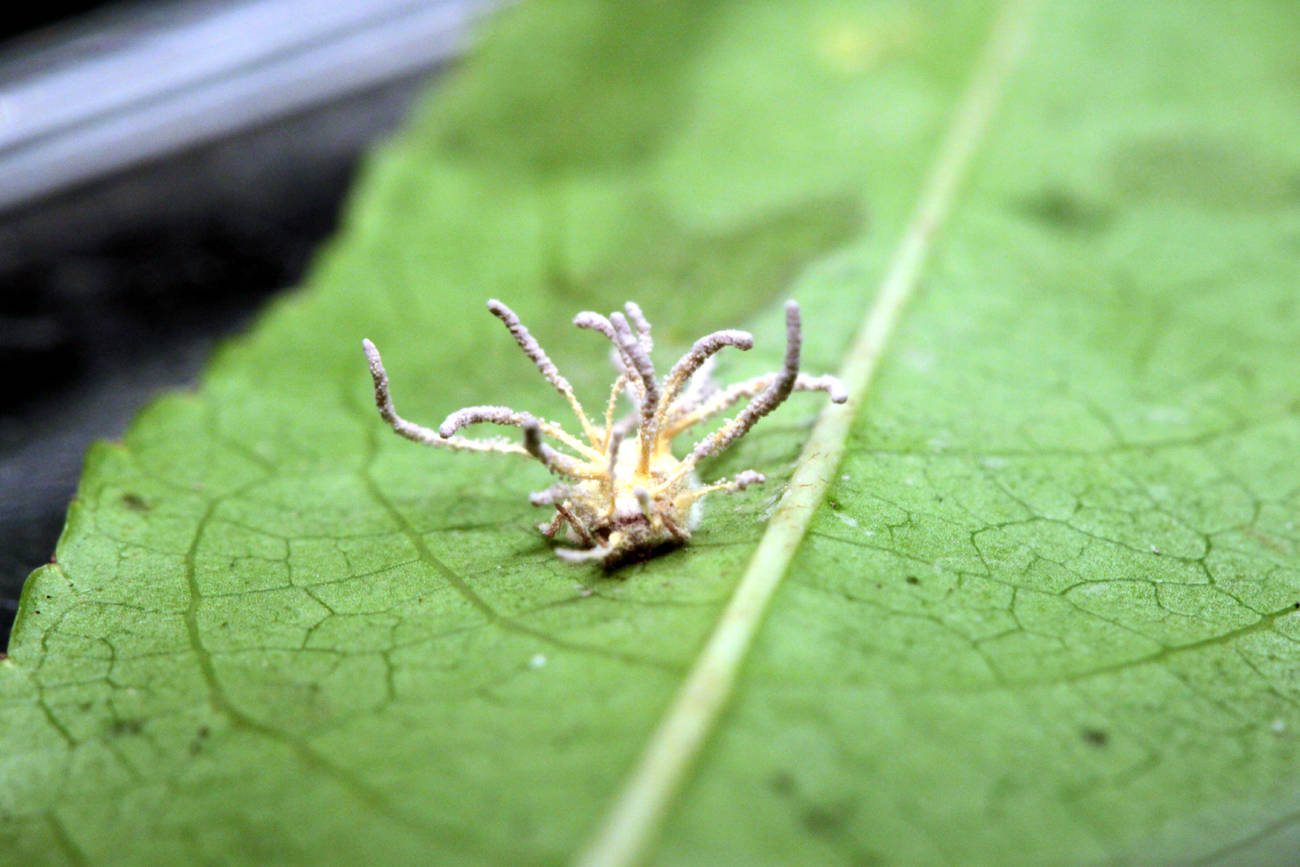
Local name: No local name known
Edibility: Too small and inconspicuous for culinary purposes.
Habitat: On hunting spiders (Araneae) attached to the underside of dicotyledonous leaves.
Description: Stroma: Basal weft of pale yellow mycelium over host. Synnemata: Several to many, cylindrical and tapering at tips, 5-10 mm, appearing purple with conidiophore heads. Conidiophores: Up to 500 m long at base of synnemata, shorter (100-200 µm) towards tips, with a prominent Y or T shaped base Heads 50-60 µm diam., purple. Metulae: Obovate, 6-10 µm long by 4-6 µm across. Phialides: 6-10 µm long and up to 3 µm across. Conidia: In chains, purple, almond-shaped, 2-5 x 1-2 µm.
Comments: This appeared to be the most common species encountered and was also the most variable. However, a general feature was that the synnemata tended to be more numerous than the other Gibellula species, more crowded and stouter. Gibellula pulchra has a world-wide distribution and in Bhutan it has been found up to 2200 masl.


